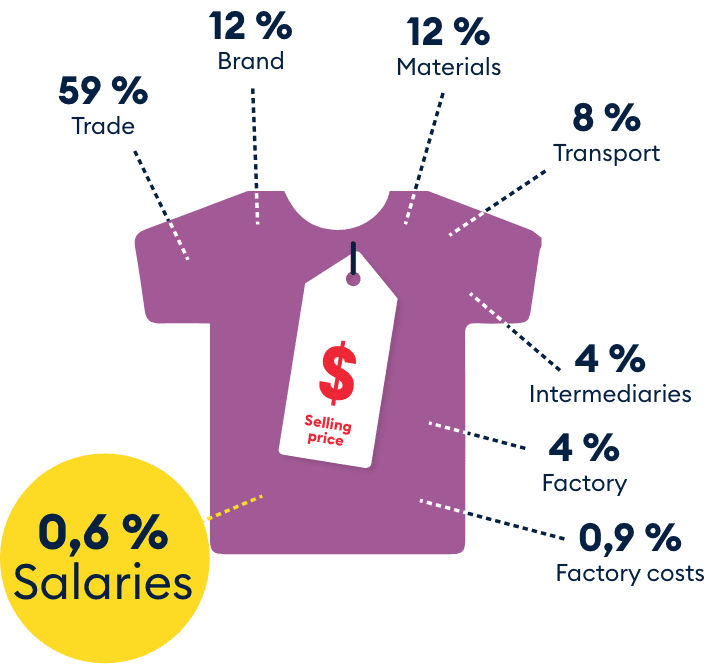 per day
per day
The textile industry continues to evolve as trends change. Since 2012, buying clothes has become more common than using them: 80% of our wardrobe is never worn (Source LaPresse). As a result, the fashion industry impacts the environment, society, and the global economy. Clothing production more than doubled between 2000 and 2015. The industry is still growing rapidly, mainly due to the “fast fashion” phenomenon, which favours short-lived textiles. The equivalent of one truckload of textile waste is burned worldwide every second of every day (Source Ellen MacArthur Foundation).
 per day
per day

At all stages of production, the textile industry is highly dependent on non-renewable resources. Each year, the production of synthetic fibres uses about 342 million barrels of oil, and cotton production requires 200,000 tons of pesticides and 8 million tons of fertilizer, adding about 93 billion cubic metres of water.
(Source Ellen MacArthur Foundation)
Canada accounts for 2% of the world’s waste, and only 15% of clothing is being reused or recycled. The rest goes to landfills. The textile sector is also the second most polluting industry in the world, accounting for 10% of carbon emissions after oil, representing 1.2 billion tons of greenhouse gases annually. If nothing changes, this industry will use a quarter of the global carbon budget by 2050.
(Source GIEC, Recycling Council of Alberta et Canada’s Ecofiscal Commission)
Lorem ipsum dolor sit amet, consectetur adipiscing elit. Fusce lectus purus, dictum quis molestie vel, bibendum nec libero. Lorem ipsum dolor sit amet, consectetur adipiscing elit. Lorem ipsum dolor sit amet, consectetur adipiscing elit. Lorem ipsum dolor sit amet, consectetur adipiscing elit. Fusce lectus purus, dictum quis molestie vel, bibendum nec libero. Lorem ipsum dolor sit amet, consectetur adipiscing elit.
Lien: lorempisum.com

The production and sale of new clothing have considerable social impacts on employees, including working conditions, human exploitation, and compensation. Less than 1% of the selling price of a garment goes to workers’ salaries. As a result, this affects our purchasing behaviours. By creating a need, we then participate in an industry of overconsumption. On the other hand, second-hand clothing allows us to create jobs by promoting the local economy and, often, to contribute to an important cause.
(Source Deloitte)

It is impossible to eliminate the production of new clothes. It is, therefore, crucial to extend the life cycle of these clothes, consume better by encouraging the “Slow Fashion” industry, and reflect before purchasing. “Slow Fashion” is the opposite of “Fast Fashion” and is based on sustainability. The concept implies using more environmentally friendly and locally sourced materials, giving additional value to everyone, from the retailer to the consumer.
The global used car market, estimated at $36 billion in 2021, is expected to double over the next five years to $77 billion. This could make the resale market grow 11 times faster than the retail sector by 2025. (Source Ellen MacArthur Foundation)
1.3 T
VALUE OF THE INDUSTRY IN TRILLION $US
98 M
TONS OF RAW MATERIALS
300 M
EMPLOYEES WORLDWIDE
4%
WORLD'S DRINKING WATER RESOURCES USED
93 G
CUBIC METRES OF WATER
1.2 G
TONS OF GREENHOUSE GASES PER YEAR